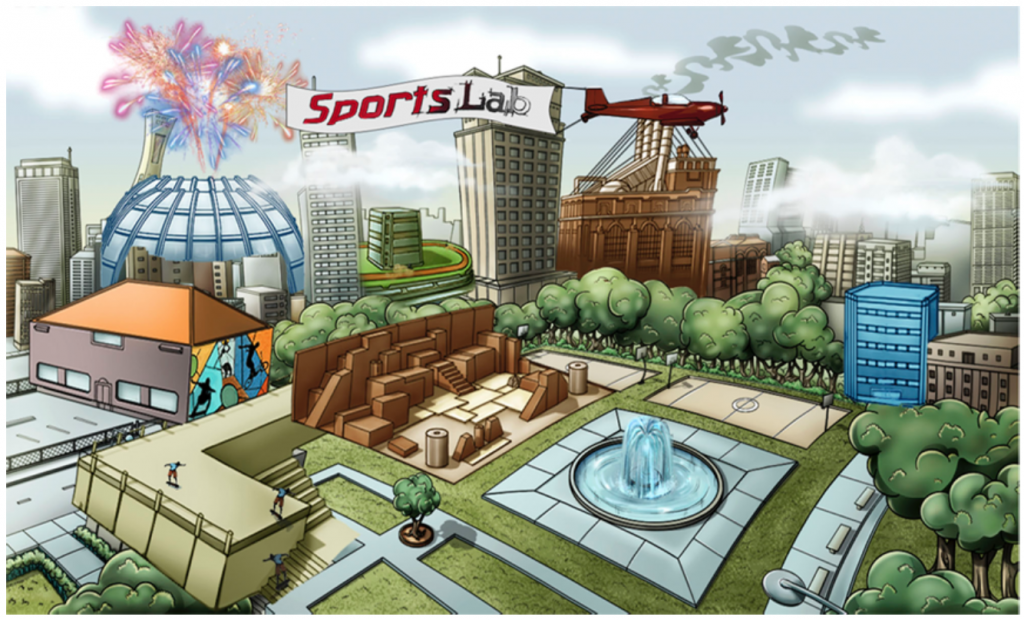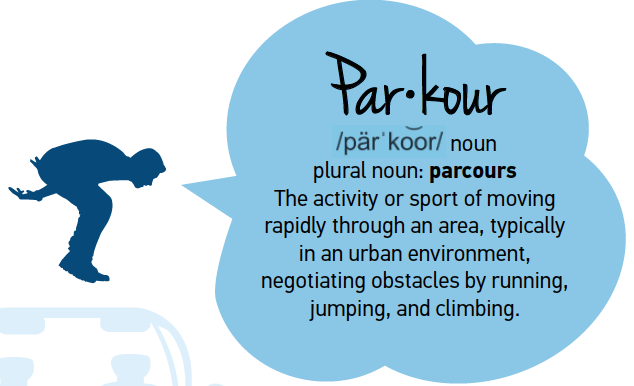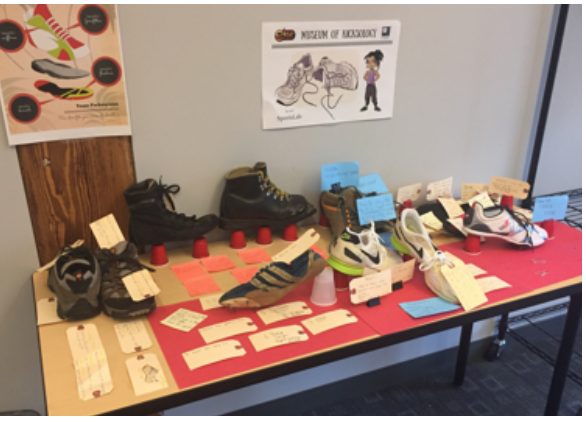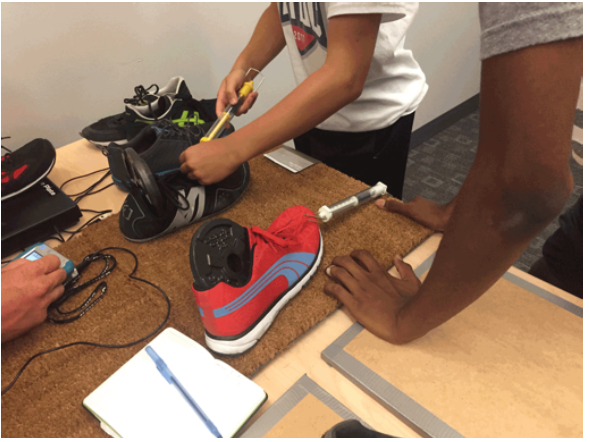Sportslab — Hands On! Winter 2018
Opening the Door to 21st Century Careers through a Sports Research and Shoe Design Challenge
By The Sportslab Team
We’ve all known students in class who think they are destined for a career in professional sports. Too often kids with their eyes on a pro career have parents who feed a goal that is a long shot at best.
A recent NPR story cites a poll in which 26% of parents with sports-minded kids in high school hope their child will turn pro.1 This number leaps to 39% in families with incomes below $50,000. Both kids and parents hold tight to this dream, even though the NCAA reports the increasingly slim chances of any student playing at the college or professional level.
Of the nearly 8 million students currently participating in high school athletics in the United States, only 480,000 of them will compete at NCAA schools. And of that group, only a fraction will realize their goal of becoming a professional or Olympic athlete 2.

Trying to get sports-minded kids excited about Science, Technology, Engineering and Mathematics (STEM) often elicits a rolling of eyes and a statement such as, “I don’t need to worry about this science stuff, I’m going be the next LeBron James!” Parents sometimes echo these sentiments: “My daughter doesn’t have time for homework. She is on a traveling team and has practice before and after school and at tournaments every weekend.” Citing the odds against a professional sports career is usually a losing argument and actually undercuts the value of sports and competition for instilling vital connections between educators and learners. It also ignores the positive lessons gained from pursuing an activity students are passionate about, lessons that can teach positive life-long learning skills—leadership, cooperation, resilience, and perseverance.
The sport-focused kid provides an extreme example of the disconnect we hear from many an unmotivated STEM student. They are not the only ones to pose the question we all have to be able to answer: When am I going to use this stuff? In this respect, an important part of our job as educators is to connect our teaching to interesting real-world careers, especially careers our students might never learn about otherwise.
While many kids don’t see how STEM might be connected to their lives, many sport product companies, as well as other businesses, wonder where they will find the STEM-trained workers they need to fill their immediate and future job needs. The Smithsonian Science Education Center claims that currently (2018), as many as 2.4 million of these jobs go unfilled 3. Minorities are hugely underrepresented in STEM careers, as just 2.2% of Latinos, 2.7% of African Americans, and 3.3% of Native Americans and Alaska Natives earn a degree in a STEM field. Couple this with the fact that only 16% of high school graduates show proficiency in STEM skills and interest in pursuing these careers 4.

Figure 1. SportsLab’s environment offers many opportunities to explore STEM careers connected to sport research and product design by visiting various locations like a sport research lab, Parkour Gym, and makerspace.

These and many other statistics indicate a need to better connect all students to STEM careers in as many ways as possible. One way is through STEM-infused, project-based learning opportunities designed to inspire students at an early age to learn about and experience real-world STEM careers they might not normally hear about in school. TERC’s SportsLab provides a connection between school, STEM careers, and the real world. SportsLab is a project-based sport research and design challenge created by EdGE, the Educational Gaming Environments group at TERC. In SportsLab, teams uncover the connection between STEM learning and 21st century skills, and explore connected careers in sport research and product design as they create and propose a shoe design for the sport of Parkour.
What is SportsLab?
SportsLab takes place in a collaborative game-like, interactive online environment, supported by hands-on activities in the real world. Using avatars, teams explore a digital world, experience a narrative story, interact with in-game characters, and access various tools and resources through a series of milestones and missions to help them design a new Parkour shoe to enter in a design competition. SportsLab teams do each of the following:
- Understand connections and consider how modern athletes depend on and can benefit from the connection between STEM concepts and performance.
- Explore form and function to create a Museum of Kicksology to uncover how the form and function of a shoe is influenced by the sport or activity for which it is designed.
- Apply the design thinking process to create a shoe that meets the needs of an athlete and integrates research findings.
- Collect and make sense of data for a variety of shoe outsoles, using a classroom traction tester to provide insights into their team’s outsole designs.
- See how data from a top female Parkour athlete, collected specifically for SportsLab in the Nike Sport Research Lab, can be turned into data visualizations of impact forces for her sport-specific moves.
- Use data visualization to inform their midsole design.
- Explore careers in sport research, product development, marketing, and other industry-related jobs.

Figure 2. In the Museum of Kicksology, SportsLab particpants uncover various STEM
connections to shoes designed for different sports.
These and other explorations are introduced through the storyline of the online character Eva, a kid who loves Parkour more than any science class. She finds an interest in STEM only when she sees how it relates to her world. In particular, she’s interested in how STEM insights can help her hack her own shoes to get better at her sport. After visiting a local makerspace to meet with a shoe designer, she comes up with an idea for a design challenge and “creates” SportsLab to get other kids motivated to help crowdsource her quest for a killer Parkour shoe. Eva introduces “players”—teams of two to four students—in her online world to other characters she has met that lead them to explore various locations, including a sport research lab, makerspace, parkour gym, and sporting goods store. As teams move through these locations, they uncover embedded assets, including background videos, datasets, and challenges. Teams apply these assets to real-world activities that culminate with each team creating a set of Final Deliverables—an inspiration board and product pitch for their Parkour shoe design. Each team’s Final Deliverable is uploaded to the GrindArena in the SportsLab environment where the top designs are shared for other teams to see and for judges to evaluate. The top designs can win prizes from SportsLab’s industry partner, Nike.
Where is SportsLab headed?
In addition to creating and running SportsLab, EdGE has been conducting research on how SportsLab engagement impacts improvements in participants’ STEM, Information and Communications Technology (ICT), and 21st century skills dispositions and career awareness. We’re now entering the last phase of our research, working to determine if SportsLab will better engage youth, many of whom may not think of themselves as STEM or ICT oriented. So far, our approach shows promise. Results from our first design challenge support SportsLab’s appeal to a broad diversity of learners. One educator of at-risk students said of the program, “For me to see how much my students are engaged in learning, makes my heart sing.” Our research indicates that SportsLab can be implemented in a wide range of formal and informal education settings where, as another teacher said, “Students felt like they were not playing at a career but got to see what that career might be like.” Students liked the narrative of Eva’s story and the environment, which helped make the activities feel more connected. Students found this approach different from most science activities. Participants especially liked the hands-on, real-world activities tied to sport research and design.

Figure 3. A SportsLab participant collects data for various outsole designs using a classroom traction tester modeled after how researchers test for coefficient of friction in the real world.
SportsLab’s project-based approach not only helps engage kids interested in sports—pro or not—but also kids already in love with STEM or interested in subjects such as art or design. Just as a design team at a sport product company comprises individuals with a diverse set of skills, a SportsLab design team benefits from and draws on each individual’s strengths as they collaborate to create their final shoe design.
While we are wrapping up our research, we are looking toward the future with an eye on creating a nationwide SportsLab Design Challenge. We hope to secure an industry partner with an interest in STEM education and an education partner that sees the value of national competitions. Securing such sponsors will let us extend SportsLab’s reach to a more diverse community of educators and learners in formal and informal settings. SportsLab will move beyond the sport of Parkour to include design challenges for different sports-related products, including adaptive sports products that integrate activities and insights from education and industry. We envision a SportsLab that will be able to respond to changes in STEM and technology, reflecting current as well as future careers.
Interested educators can learn more about SportsLab’s current work by visiting the EdGE website (http://edge.terc.edu). If you want to learn more about SportsLab’s research or its future beyond our grant, contact us via our website or e-mail: sportslab@terc.edu.
Who knows? Maybe the kid in your class who likes to draw may decide to focus his energy on learning how STEM can improve skills and career choices. Maybe he will design the next killer sneaker. Or if that kid who loves sports turns pro, perhaps her understanding of the importance of STEM to performance may inspire her to give back to education, as the real LeBron James did by funding a school and a better future for others. SportsLab can build a future that helps kids see the connection between mind and body, learning and sport, and fulfilling careers.
This work was supported by the National Science Foundation under grant 1311901. Any opinions, findings, and conclusions or recommendations expressed in this material are those of the author(s) and do not necessarily reflect the views of the National Science Foundation.
ENDNOTES
1. NPR (2015). How Likely Your Athletic Kid Will Turn Pro. Retrieved from https://www.npr.org/sections/health-shots/2015/09/04/432795481/how-likely-is-it-really-that-your-athletic-kid-will-turn-pro
2. NCAA (2018). Probability of Competing Beyond High School. Retrieved from http://www.ncaa.org/about/resources/research/probability-competing-beyond-high-school
3. Smithsonian Center for Science Education (2018). The STEM Imperative. Retrieved from https://ssec.si.edu/stem-imperative
4. UC Davis STEM Portal (2018). STEM and US Job Market. Retrieved from https://stem.ucdavis.edu/stem-and-us-job-market/
Thanks
The SportsLab Team would like to thank the EdGE at TERC team, the Nike Sport Research Lab, Vernier Software and Technology, Exeter Research, New Knowledge Organization, and FunAtomic for their support and work on SportsLab. We’d also like to thank all the educators and students that have provided feedback along the way. Lastly, a thank you to Brandee Laird of Parkour Visions, a truly inspirational athlete who gets the balance between art and science.
